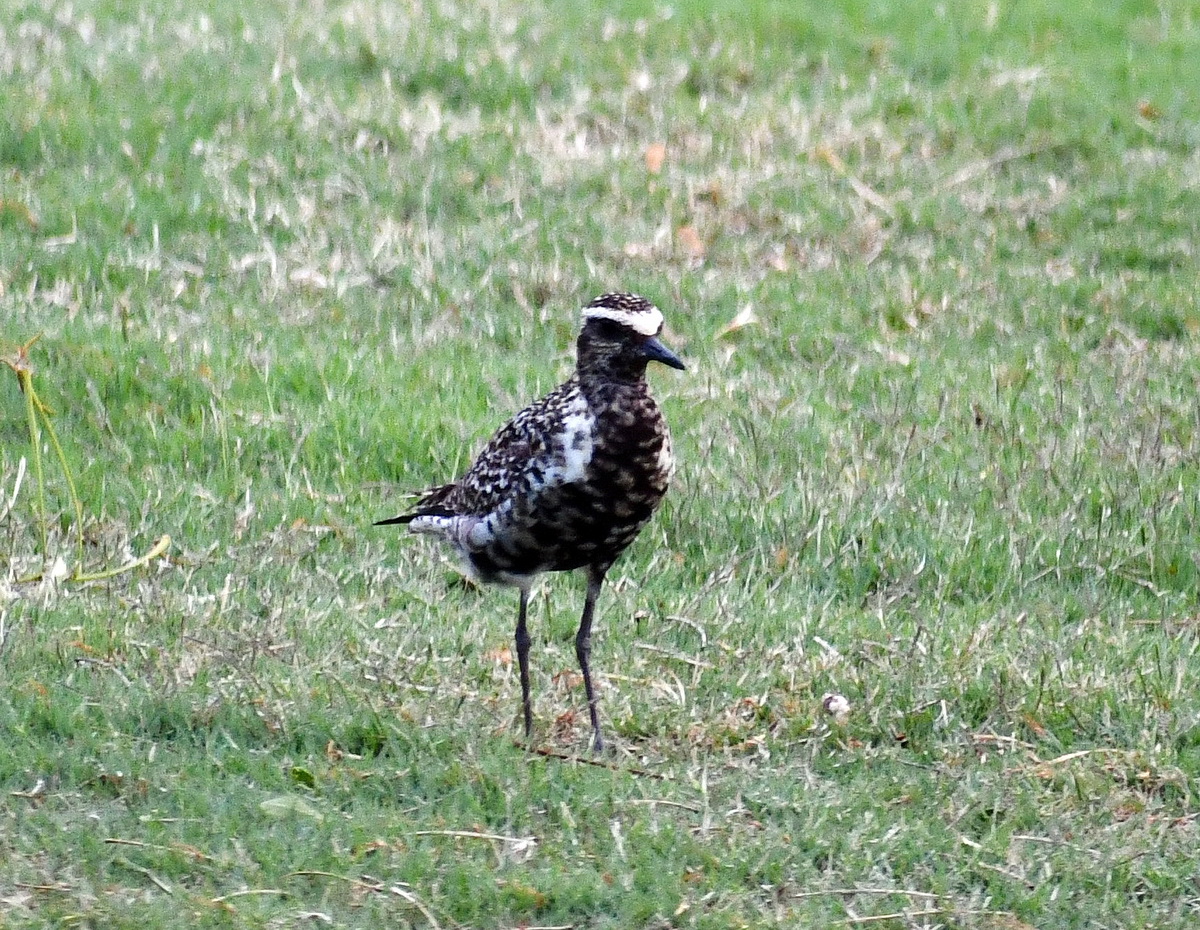
On July 25, 2020, my Julie/Jake arrived on the MidPacific Golf Course.
July 30, 2020. Last week, a day after I wrote that I would soon hear from plover lovers that their Kolea are back, one of my two Kolea came back. Our dear Jake, or Julie, who forage all winter on opposite sides of a giant monkey pod tree off our lanai, showed up last Saturday, July 25th.
Because Kolea begin shedding their bright breeding-colored feathers while sitting on their eggs in June on the Alaska tundra, by the end of July most of those brilliant feathers are gone. We can’t, therefore, be sure whether a returned bird is male or female.
Like most animals, though, wide variations occur among individuals. Our returned bird still carries some spring colors, but whether its Jake with his winter outfit peeking through, or Julie still wearing much of her spring attire, I can’t say.
According to my neighbor, Joanne, I am the Head Honcho Queen Bee Leader of Kolea Kounters. That lofty title got me looking through my Kolea email file, saved since 2012, for first return dates:
— July 30, 2012: “I live in Mililani Mauka and came home to see my favorite Kolea in my backyard this afternoon!”
— August 3, 2013: “Saw a lone Kolea today @ Wailua Golf Course, on Kauai, on the 17th fairway.”
— August 2, 2014: “Jane said that your plover returned on Thursday–mine, too!”
— July 1, 2015: “I saw a Kolea at Hunakai Park in Kahala.”
— July 26, 2016: “Just saw two female plovers foraging together in my neighbor’s yard [Keeamoku.]”
— July 25, 2017: Plover at BYUH yesterday [with photo] reported to Wally Johnson who forwarded to me.
— July 3, 2018: “…on my noontime walk at work yesterday, I spotted the first Kolea to show up in the area where I work near Whitmore Village.”
— July 16, 2019: “On our walk this morning we saw 3 plovers at Mililani Mauka Community Park.”
— July 25, 2020: “…I may have seen our first sighting(s) of a (pair?) of newly returned koleas.” Several of us saw our birds return last weekend, arriving just before Hurricane Douglas passed near Hawaii.
Most of the plover watchers above remarked that this seemed an early return for the birds, but a glance shows that late July/early August is normal. After these initial sightings, emails poured in about plover returns.
It’s possible that the July 1st and 3rd dates above were birds whose eggs or hatchlings were eaten by foxes, gulls, falcons, or jaegers, causing the parents to give up the season and come home. Migrating caribou also sometimes trample nests.
There’s also the chance that the July 1st and 3rd birds had been here all summer, a group we just this year began to count. Birds that aren’t in good enough shape to make the 3-day, nonstop, 3,000-mile migration in April and May know it, and stay in Hawaii. Plover expert, Wally Johnson, thinks most of those are first-year birds, but there’s no way to know without catching them to examine their wing feathers, distinct (to Wally) in the first year of life. And catching a healthy Kolea is no small task.
The above is the only compilation (that I know of) of Kolea return dates, and shows the value of citizen science.
Thank you, plover lovers, for contributing to the Kolea Count. I’m working on an announcement of how to sign up, what we ask of volunteers, and other details.
Aloha,
Head Honcho Queen Bee Leader of Kolea Kounters, Susan Scott